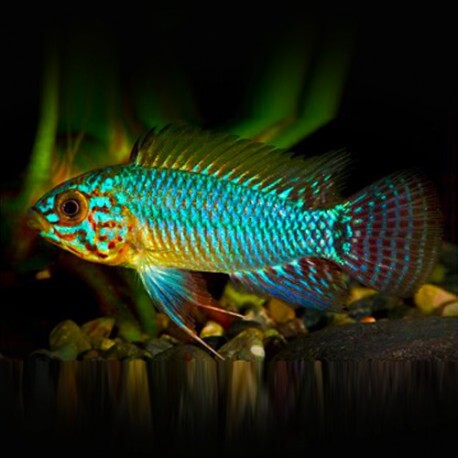Bramgroet
Active Member
- Messages
- 182
Oke then can we know the color variation? And is €22 overpriced for these fish ?
As I said earlier, to be sure that they are in fact A. sp. Nanay, they need to show their diagnostic features clearly (yellow pectorals and red/orange eyering), which they may not do in the tanks of the LFS because of less than optimal water parameters or other sources of stress. However, even if we know that they are A. sp. Nanay it may still be impossible to tell which form they are.Oke then can we know the color variation?
If they are wild caught the price is ok for me.And is €22 overpriced for these fish ?
So they are pretty rare. Personally i like the doll grown specimens of caetei more then the full grown pictures of the A. Sp. nanay. But how do I know if they are male or female?I haven't seen or heard of any caetei-complex species in the hobby for several decades. Whichever actual species it is (and it is not Rotwangen) it is a white-/clearwater species and relatively non-problematic breeders.
As I know you have the connections, does your statement include the european hobby or only refer to north america?I haven't seen or heard of any caetei-complex species in the hobby for several decades.
Echoes what I know. There are some in circluation here, so I'd not say they are super rare, but also nothing you find any day of the week. Usually in the 20-25€-range you have uncommon but not rare species.Two years ago a friend of mine kept a caetei form (in Germany). I don't know whether he still has them.


That one is A. Sp. steel blue a man made species this fish does not occur in the wild.Several stores in europe claim to be selling them now like this one:
These ones are $180 and the fish on the picture look more like A. Cf. Agassiziior maybe i'm totally confused.
and this one in usa:
It is a 200 liter, 100cm x 40cm x 50cm i have a spare 50 liter(50cm x 30cm x 30cm).Maybe I missed reading it somewhere, but what size is the aquarium?
Well since i have a spare tank i might reproduce but that's not the main goal. I do want a couple or a harem (not sure if that's the right word in english) if they produce to much fry i might separate the male and females. I do have some (bad) pictures of the A. bitaenitiata from the lfs but you have a lot of A. cf. bitaenitiata so i dont know which species it is. I could ask for the catch location.Yes, A. bitaeniata will live in your water values and might even successfully reproduce in them.
As I suspect to have bought fish from the same LFS Bramgroet is referring to, and even from the same consignment of WC "ortegai's" he sent pictures of, I should like to bring in new pictures of one of these fish, from my own tank (100x40x45 cm). Only to get as close as possible to a definite ID of these fish. The pictures show the (or should I say a) male. The dominant fish. The other two I bought are hopefully females I hardly ever get to see as they are continually chased off by the "alpha-man". The pectoral fins have an orange base. The ventral fins are orange. The tail fin is also orange but somewahat less intensively coloured.Then they are probably A. sp. Nanay.
As I said, your fish (as well as Bramgroet's) can also be another cruzi-subcomplex species. The conclusion that it probably is A. sp. Nanay, mostly depends on the supposed catch location. However, we all know that the locations told to us by the trade are "not always" reliable.When I see pictures of A. sp. nanay I don't see all that many similarities with this fish, though I realize that polychromism might explain that.